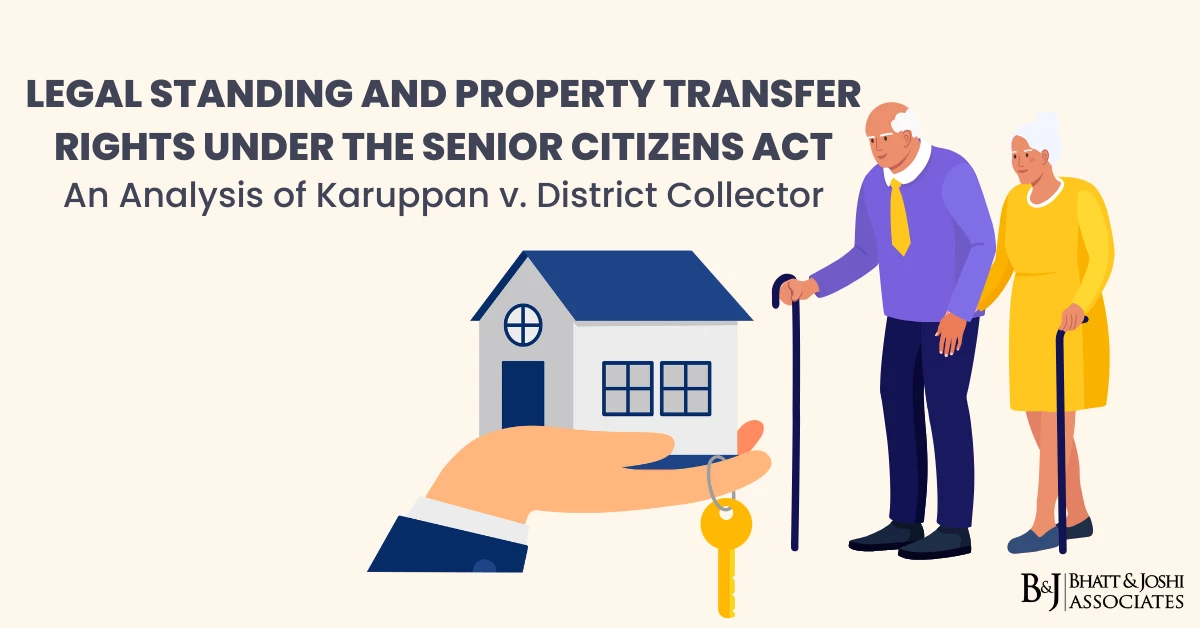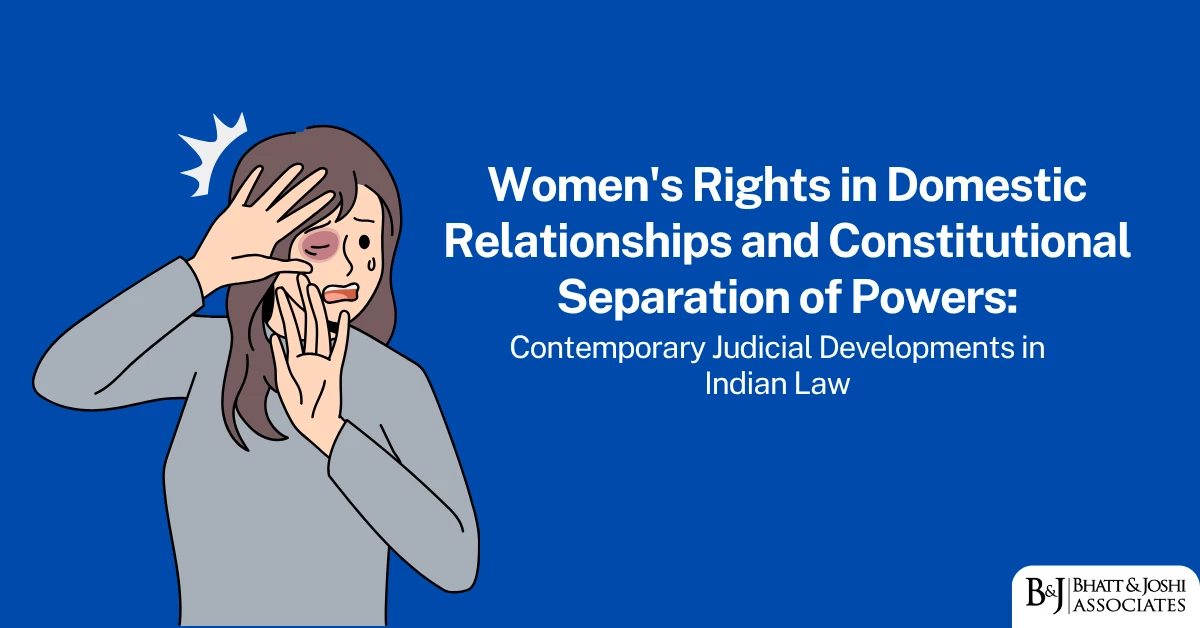Introduction
Customs valuation constitutes the foundational framework upon which the entire edifice of customs duty assessment rests in India. The process of determining the accurate value of imported and exported goods is not merely an administrative formality but serves as the cornerstone for revenue collection, trade facilitation, and economic protection. The customs valuation system in India is governed primarily by Section 14 of the Customs Act, 1962, which establishes the legal framework for determining the assessable value of goods.
The customs duty system operates as an indirect taxation mechanism where the tax burden is attached to the goods rather than the individual. As per Section 14 of the Customs Act, the value of imported goods or export goods is the transaction value, which is defined as the price actually paid or payable for the goods. This fundamental principle ensures that customs valuation reflects genuine commercial transactions and prevents the use of arbitrary or fictitious values that could distort trade flows.
The legal foundation for customs duty valuation in India draws its strength from both domestic legislation and international agreements. The Indian valuation framework is based on the WTO Agreement on Customs Valuation, which ensures that determinations of customs value for applying duty rates to imported goods are conducted in a neutral and uniform manner, precluding the use of arbitrary or fictitious customs values. This international alignment ensures that India’s customs practices conform to global standards while protecting the interests of both revenue authorities and legitimate traders.

Constitutional and Legal Framework
Constitutional Authority
The constitutional mandate for customs duty collection emanates from the fundamental structure of India’s federal system. Article 265 of the Constitution of India categorically states that “no tax shall be levied or collected except by authority of law” [1]. This provision establishes the requirement that all taxation, including customs duties, must have explicit legislative sanction. The specific power to legislate on customs matters is derived from Entry No. 83 of List I (Union List) to Schedule VII of the Constitution, which empowers the Union Government to legislate and collect duties on imports and exports [2].
This constitutional framework ensures that customs valuation operates within clearly defined legal boundaries and prevents arbitrary exercise of power by customs authorities. The constitutional requirement for legislative backing also ensures that any changes to valuation methodology must undergo proper parliamentary scrutiny and debate.
Primary Legislative Framework
The Customs Act, 1962, serves as the principal legislation governing customs operations in India. Section 14 of the Act prescribes the methodology for determining the value of imported and exported goods for customs duty purposes. The Act extends to the whole of India and provides comprehensive coverage of customs procedures, including valuation, assessment, and collection of duties.
The legislative framework is further complemented by the Customs Tariff Act, 1975, which provides the rate structure for customs duties. Together, these Acts create a comprehensive legal ecosystem that governs the entire spectrum of customs operations, from valuation to final duty collection.
International Legal Framework and WTO Compliance
GATT Article VII and Its Evolution
Article VII of the GATT outlines the requirements for customs duty valuation Purposes and is applicable to all members of the World Trade Organization. The historical development of international customs valuation standards can be traced back to the original GATT 1947, which recognized the need for uniform valuation principles to prevent trade distortions and ensure fair competition in international markets.
The Agreement on Implementation of Article VII of the General Agreement on Tariffs and Trade 1994, officially known as the WTO Agreement on Customs Valuation, elaborates and makes more precise the valuation principles established in the original GATT framework. This Agreement entered into force on January 1, 1995, and has no expiration date, providing long-term stability to international customs valuation practices.
WTO Agreement on Customs Valuation
The WTO Agreement on Implementation of Article VII of the GATT, concluded during the Uruguay Round, established a positive system of customs valuation based on the price actually paid or payable for imported goods. This transaction value approach represents a fundamental shift from earlier systems that relied on notional or artificial values.
The Agreement establishes six hierarchical methods of valuation, with transaction value serving as the primary method. When transaction value cannot be applied, customs authorities must proceed sequentially through alternative methods, including comparison with identical goods, similar goods, deductive value, computed value, and finally, the fall-back method.
Technical Committee on Customs Valuation
The Agreement established a Technical Committee on Customs Valuation under the auspices of the World Customs Organization, with a view to ensuring, at the technical level, uniformity in interpretation and application of the WTO Valuation Agreement. This Technical Committee meets at least twice a year and serves several critical functions including examining specific technical problems arising in day-to-day administration of the Agreement, providing advisory opinions for valuation issues, and studying valuation laws and practices of member countries.
Detailed Analysis of Section 14 of the Customs Act, 1962
Section 14(1): Transaction Value Principle
Section 14(1) of the Customs Act, 1962 states that for the purposes of the Customs Tariff Act, 1975, or any other law for the time being in force, the value of imported goods and export goods shall be the transaction value of such goods. The transaction value is defined as the price actually paid or payable for goods when sold for export to India for delivery at the time and place of importation, or for export from India for delivery at the time and place of exportation.
The statute establishes three fundamental conditions for applying transaction value. First, the buyer and seller of the goods must not be related parties. Second, the price must be the sole consideration for the sale. Third, the transaction must be subject to such other conditions as may be specified in rules made under the Act. These conditions ensure that the declared value reflects genuine arm’s length commercial transactions.
Inclusions in Transaction Value for Imported Goods
The transaction value in the case of imported goods shall include, in addition to the price, any amount paid or payable for costs and services, including commissions and brokerage, engineering, design work, royalties and licence fees, costs of transportation to the place of importation, insurance, loading, unloading and handling charges. This comprehensive list ensures that the customs value reflects the true cost of bringing goods to India and prevents undervaluation through artificial separation of costs.
The inclusion of these additional costs serves multiple purposes. It prevents importers from splitting legitimate costs across different transactions to reduce the dutiable value. It also ensures that the customs value represents the complete economic cost of the import transaction, providing a fair basis for duty calculation.
Rule-Making Powers
The statute provides extensive rule-making powers to address various scenarios that may arise in practice. The rules may provide for the circumstances in which buyer and seller shall be deemed to be related, the manner of determination of value when there is no sale or when buyer and seller are related, and the manner of acceptance or rejection of value declared by the importer or exporter.
These rule-making powers ensure that the valuation system can adapt to evolving commercial practices while maintaining consistency and fairness in application. The rules also provide detailed guidance on technical aspects of valuation, reducing uncertainty for both traders and customs officials.
Section 14(2): Tariff Value Provisions
Section 14(2) provides that the Board may fix tariff values for any class of imported goods or export goods, having regard to the trend of value of such or like goods by notification in the Official Gazette if it is satisfied that it is necessary to do so. When tariff values are fixed, customs duty becomes chargeable with reference to such tariff values, overriding the transaction value provisions of Section 14(1).
The tariff value mechanism serves as an important tool for revenue protection and prevention of systematic undervaluation. Under the Customs Act, 1962, the Central Government has been empowered to fix Tariff Values for any product, and if Tariff Value is fixed for any goods, then ad-valorem duties are to be calculated with reference to such Tariff Value.
Current tariff values have been notified for specific commodities including crude palm oil, RBD palm oil, brass scrap, poppy seeds, areca nuts, and precious metals like gold and silver. These tariff values are typically established based on international price trends and help prevent revenue loss through undervaluation of these sensitive commodities.
Currency Conversion and Exchange Rates
The determination of exchange rates for customs valuation follows specific statutory provisions designed to ensure consistency and prevent manipulation. For imported goods, the conversion in value shall be done with reference to the rate of exchange prevalent on the date of filing the bill of entry under section 46, while for export goods, the conversion shall be done with reference to the rate of exchange prevalent on the date of filing shipping bill or bill of export under section 50.
The rate of exchange for customs purposes is determined by the Central Board of Indirect Taxes and Customs (CBIC), which notifies rates periodically, generally every fortnight. There are separate rates for imported goods (selling rate) and export goods (buying rate), reflecting the different perspectives of the transactions involved.
Customs Valuation Rules, 2007
Legislative Framework and Scope
The Customs Valuation (Determination of Value of Imported Goods) Rules, 2007 and the Customs Valuation (Determination of Value of Export Goods) Rules, 2007 were notified effective from October 10, 2007, superseding the earlier 1988 Rules. These Rules implement the WTO Agreement on Customs Valuation and provide detailed methodology for determining customs value when the transaction value method under Section 14(1) cannot be applied.
The Rules establish a hierarchical system of valuation methods that must be applied in sequence. If the value of imported goods cannot be determined under the provisions of rules 3, 4 and 5, the value shall be determined under the provisions of rule 7 or, when the value cannot be determined under that rule, under rule 8. This sequential approach ensures consistency and prevents arbitrary selection of valuation methods.
Related Party Transactions
Rule 2(2) of the Customs Valuation (Determination of Value of Imported Goods) Rules, 2007 provides comprehensive criteria for determining when persons shall be deemed to be “related”. The definition covers various forms of business relationships including officers or directors of each other’s businesses, legally recognised business partners, employers and employees, and situations involving ownership or control of voting stock or shares.
Where buyer and seller are related, the transaction value can be accepted if the examination of circumstances indicates that the relationship did not influence the price, or if the importer demonstrates that the declared value closely approximates to one of the test values for identical or similar goods. This provision recognizes that related party transactions may still reflect genuine market values and should not be automatically rejected.
Hierarchical Valuation Methods
Rule 4: Transaction Value of Identical Goods
When transaction value cannot be determined under Rule 3, the Rules provide for valuation based on transaction value of identical goods. Identical goods are defined as imported goods that are the same in all respects except for minor differences in appearance that do not affect the value, produced in the same country and by the same or different person. The transaction value of identical goods exported to India at or about the same time should be used, with adjustments made for differences in quantity and commercial level.
Rule 5: Transaction Value of Similar Goods
Similar goods are also defined under Rule 2 and refer to imported goods that, although not alike in all respects, have like characteristics and like component materials which enable them to perform the same functions and be commercially interchangeable. The methodology for applying this rule follows the same principles as for identical goods, with appropriate adjustments for differences.
Rule 7: Deductive Value Method
The deductive value method bases valuation on the unit price at which imported, identical, or similar goods are sold in India in the greatest aggregate quantity to unrelated buyers, after deducting commissions, profits, transportation costs within India, and customs duties. This method ensures that the customs value reflects the Indian market reality while removing elements that are not part of the import transaction.
Rule 8: Computed Value Method
The computed value method builds up the customs value from the constituent elements of cost, including materials, manufacturing costs, and profit margins typical for the relevant industry. This method is particularly useful for manufactured goods where the production costs can be accurately determined.
Rule 9: Fall-back Method
When none of the preceding methods can be applied, Rule 9 provides the fall-back method, which allows determination of customs value using reasonable means consistent with the principles and general provisions of the Agreement. Under the fall-back method, the customs value must not be based on the selling price of goods in the country of importation, a system which provides for acceptance of the higher of two alternative values, or the price of goods on the domestic market of the country of exportation.
Landmark Judicial Decisions
Demurrage Charges and Valuation
The question of whether demurrage charges should be included in the assessable value of imported goods has been conclusively settled by Supreme Court jurisprudence. In various Supreme Court judgments including Wipro Ltd., Essar Steel Ltd., and Mangalore Refinery and Petrochemicals Ltd., it has been clearly established that demurrage cannot be included for the purpose of valuation under the Customs Act, 1962.
The Supreme Court’s reasoning in these cases emphasizes that demurrage charges are incurred after goods reach Indian ports and constitute a post-importation event. The issue whether demurrage charges can form part of the assessable value has been decided in favour of the assessee, confirming that such charges are not includible in customs valuation. This judicial position recognizes that demurrage is essentially a penalty for delayed removal of goods and does not represent part of the transaction value for importing the goods.
Volatile Market Prices and Contemporaneous Imports
The case of Commissioner of Customs, Visakhapatnam v. Aggarwal Industries Ltd. provides important guidance on valuation in volatile commodity markets. In this case, the importer had entered into a contract for supply of crude sunflower seed oil at agreed prices, but due to extended shipping time, international prices had increased significantly by the time of import. The customs department sought to increase the assessable value based on higher contemporaneous import prices.
The Tribunal correctly held that the department’s approach was flawed. Despite the commodity’s volatile price fluctuations in international markets, the supplier had honored the original agreed price without increase. In the absence of any allegation of collusion between supplier and importer, the declared value based on the actual transaction price was properly accepted. This decision establishes the principle that actual transaction prices should be respected even in volatile markets, provided they represent genuine commercial arrangements.
Evidence Requirements for Value Enhancement
The Supreme Court decision in Gira Enterprises v. Commissioner of Customs establishes crucial principles regarding the evidence required for enhancing declared values. The Supreme Court held that mere existence of alleged computer printout was not proof of existence of comparable imports, and even if such printout existed and was true, it must have been supplied to the appellant with reasonable opportunity to establish that the import transactions were not comparable.
This judgment emphasizes several important principles. First, customs authorities cannot enhance values based on unsubstantiated claims of comparable imports at higher prices. Second, when relying on comparable import data, the department must provide complete information to the importer and allow adequate opportunity for rebuttal. Third, the burden of proof for undervaluation lies on the department, which must provide cogent evidence supporting its claims.
Transaction Value Rejection and Sequential Application
The Supreme Court has held that when transaction value under Rule 4 is rejected, the value shall be determined by proceeding sequentially through Rules 5 to 8 of the Customs Valuation Rules. This principle ensures that customs authorities cannot arbitrarily select valuation methods but must follow the prescribed hierarchy.
The Court has also emphasized that before rejecting invoice prices, departments must provide cogent reasons and that undervaluation allegations must be supported by detailed inquiries, material collection, and adequate evidence. If charges of undervaluation cannot be supported by evidence or information about comparable imports, the benefit of doubt must go to the importer.
Regulatory Implementation and Administrative Practice
Role of the Directorate General of Valuation
The Directorate General of Valuation (DGV) serves as the apex technical body for customs valuation matters in India. The DGV provides guidance on valuation methodology, issues clarifications on complex valuation issues, and ensures uniformity in valuation practices across different customs formations. The Directorate also conducts training programs for customs officers and maintains databases of valuation information to support field formations.
Special Valuation Branch Operations
Complex valuation cases, particularly those involving related party transactions and transfer pricing issues, are typically handled by Special Valuation Branches (SVBs) established at major customs locations. In related party transactions, the importer is required to fill a questionnaire and furnish a list of documents so that it can be ascertained whether the case requires investigation by SVB. These specialized units have enhanced technical capabilities and access to international databases for conducting detailed valuation investigations.
Advance Rulings on Valuation
The Authority for Advance Rulings provides binding determinations on valuation issues, offering certainty to importers regarding the acceptable methodology for customs valuation. These rulings cover various aspects including related party pricing, allocation of costs between capital goods and services, and interpretation of complex international transactions.
Contemporary Challenges and Developments
Digital Economy and Valuation
The emergence of digital goods and services presents new challenges for customs duty valuation. Traditional valuation methods developed for physical goods may not adequately address transactions involving software, digital content, and cloud-based services. Customs authorities worldwide, including India, are developing new approaches to ensure appropriate valuation of digital imports while avoiding double taxation and compliance burdens.
Transfer Pricing and Customs Valuation Interface
The increasing sophistication of multinational enterprises has created complex interactions between transfer pricing regulations under income tax law and customs valuation requirements. While both regimes aim to ensure appropriate pricing of related party transactions, they operate under different legal frameworks and may reach different conclusions regarding acceptable prices.
Post-COVID-19 Valuation Challenges
The COVID-19 pandemic significantly disrupted global supply chains and created unprecedented volatility in commodity prices. These disruptions have challenged traditional valuation approaches and required customs authorities to develop flexible mechanisms for handling extraordinary market conditions while maintaining revenue protection objectives.
Best Practices for Compliance
Documentation Requirements
Successful customs duty valuation compliance requires comprehensive documentation supporting declared values. Importers should maintain complete records of purchase agreements, payment terms, related party relationships, and any additional costs or services included in the transaction. Proper documentation reduces the likelihood of valuation disputes and facilitates quick clearance of goods.
Related Party Compliance
Companies engaged in related party imports should establish robust documentation procedures demonstrating that their pricing reflects arm’s length principles. This includes maintaining economic analyses supporting transfer prices, benchmarking studies comparing prices with unrelated party transactions, and comprehensive disclosure of all costs and services included in declared values.
Advance Planning and Consultation
Proactive engagement with customs authorities through advance rulings, regular consultations, and participation in facilitation programs can significantly reduce valuation-related disputes. Companies should also invest in training their compliance teams on current valuation requirements and emerging regulatory developments.
Future Directions and Recommendations
Technology Integration
The future of customs duty valuation lies in enhanced technology integration, including artificial intelligence for risk assessment, blockchain for supply chain transparency, and big data analytics for benchmarking and verification. These technologies can improve accuracy while reducing compliance costs and processing times.
International Cooperation
Enhanced international cooperation in sharing valuation information and best practices can improve global consistency in customs valuation. India’s participation in WTO committees and bilateral customs cooperation agreements contributes to this objective while protecting domestic revenue interests.
Simplified Procedures
Continued development of simplified valuation procedures for low-risk traders and standardized goods can improve trade facilitation while maintaining revenue protection. Risk-based approaches that focus enforcement resources on high-risk transactions can optimize both compliance and facilitation objectives.
Conclusion
The customs duty valuation framework under the Customs Act, 1962, represents a sophisticated legal and administrative system designed to balance multiple objectives including revenue protection, trade facilitation, and compliance with international commitments. The framework is based on internationally accepted principles embodied in the WTO Agreement on Customs Valuation and seeks to ensure that customs values reflect genuine commercial transactions.
The evolution of customs valuation from arbitrary administrative determinations to a rules-based system grounded in actual transaction values represents significant progress in creating a predictable and fair trading environment. The hierarchical structure of valuation methods ensures that customs authorities follow consistent approaches while providing flexibility to address complex commercial arrangements.
Judicial interpretation has played a crucial role in clarifying the scope and application of valuation provisions, particularly in establishing limits on administrative discretion and requiring proper evidence for value enhancement. The Supreme Court’s emphasis on actual transaction values and due process protections helps maintain confidence in the valuation system among the trading community.
Looking forward, the customs valuation system must continue evolving to address emerging challenges including digital trade, complex supply chain arrangements, and evolving commercial practices. Technology integration, enhanced international cooperation, and risk-based approaches offer promising avenues for improving both compliance and facilitation outcomes.
For importers and exporters, success in customs valuation compliance requires thorough understanding of legal requirements, comprehensive documentation practices, and proactive engagement with regulatory authorities. The complexity of modern international trade demands sophisticated compliance systems supported by expert knowledge and appropriate technology tools.
The customs valuation framework ultimately serves the broader objective of creating a transparent, predictable, and fair system for international trade. By maintaining this balance between revenue protection and trade facilitation, the system contributes to India’s economic development and integration with global supply chains.
References
[1] Constitution of India, Article 265.
[2] Constitution of India, Entry No. 83, List I, Schedule VII.
[3] World Trade Organization. “Agreement on Implementation of Article VII of the General Agreement on Tariffs and Trade 1994.” Available at: https://www.wto.org/english/docs_e/legal_e/20-val.pdf
[4] United States Trade Representative. “Customs Valuation.” Available at: https://ustr.gov/trade-agreements/wto-multilateral-affairs/wto-issues/customs-issues/customs-valuation
[5] Government of India. “The Customs Act, 1962.” Available at: https://www.indiacode.nic.in/bitstream/123456789/15359/1/the_customs_act,_1962.pdf
[6] Central Board of Indirect Taxes and Customs. “Customs Valuation (Determination of Value of Imported Goods) Rules, 2007.” Available at: https://www.cbic.gov.in/
[7] Directorate General of Valuation. “Brief on Valuation.” Available at: https://dov.gov.in/brief-valuation
[8] Supreme Court of India. Commissioner of Central Excise, Mangalore v. Mangalore Refinery & Petrochemicals Ltd., Civil Appeal Nos. 2691-2728 of 2009.
[9] Supreme Court of India. Gira Enterprises v. Commissioner of Customs, 2005.
[10] Customs, Excise and Service Tax Appellate Tribunal. M/s. Mangalore Refinery & Petrochemicals Limited v. Commissioner of Customs, Mangalore, Appeal No. C/525/2007.
[11] World Customs Organization. “WTO Valuation Agreement.” Available at: https://www.wcoomd.org/en/topics/valuation/overview/wto-valuation-agreement.aspx
[12] Trade.gov. “Trade Guide: Customs Valuation.” Available at: https://www.trade.gov/trade-guide-customs-valuation
[13] TaxGuru. “Customs Valuation under Customs Act, 1962.” Available at: https://taxguru.in/custom-duty/customs-valuation-under-customs-act-1962.html
[14] Taxmann. “Valuation Under the Customs Act.” Available at: https://www.taxmann.com/post/blog/valuation-under-the-customs-act/
[15] ASC Group. “Calculation of Customs Duty and Customs Valuation Rules.” Available at: https://www.ascgroup.in/calculation-of-customs-duty-and-customs-valuation-rules/
PDF Links to Full Judgments
- https://bhattandjoshiassociates.s3.ap-south-1.amazonaws.com/judgements/20240716890312078.pdf
- https://bhattandjoshiassociates.s3.ap-south-1.amazonaws.com/judgements/the_customs_act,_1962.pdf
- https://bhattandjoshiassociates.s3.ap-south-1.amazonaws.com/judgements/M_S_Gira_Enterprises_Anr_vs_Commissioner_Of_Customs_Ahmedabad_on_21_August_2014.PDF
- https://bhattandjoshiassociates.s3.ap-south-1.amazonaws.com/judgements/Mangalore_Refinery_And_Petrochemicals_vs_Commissioner_Of_Customs_on_6_February_2006.PDF











